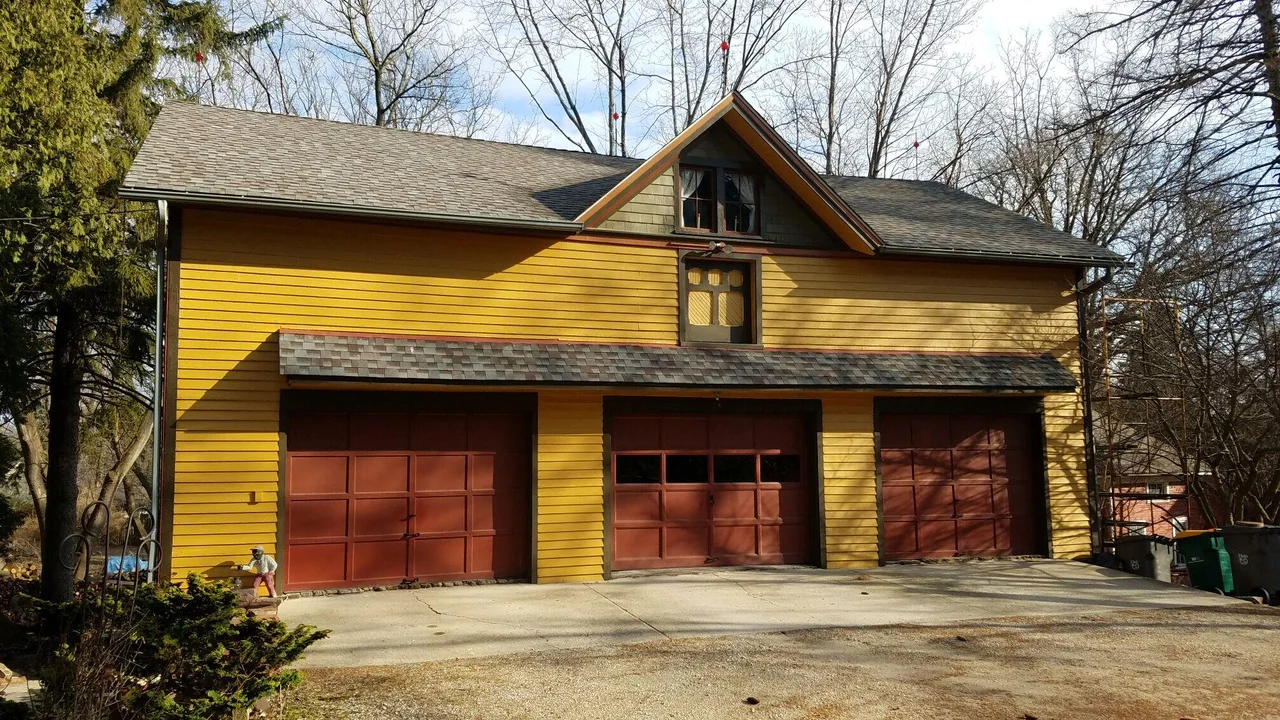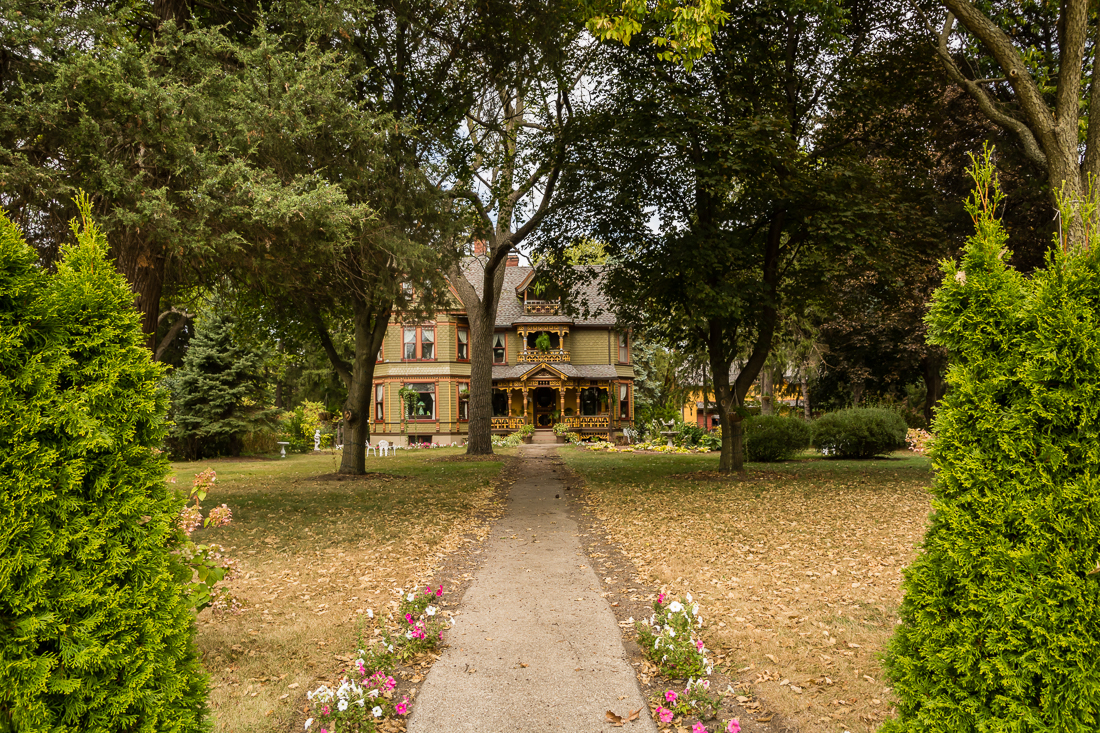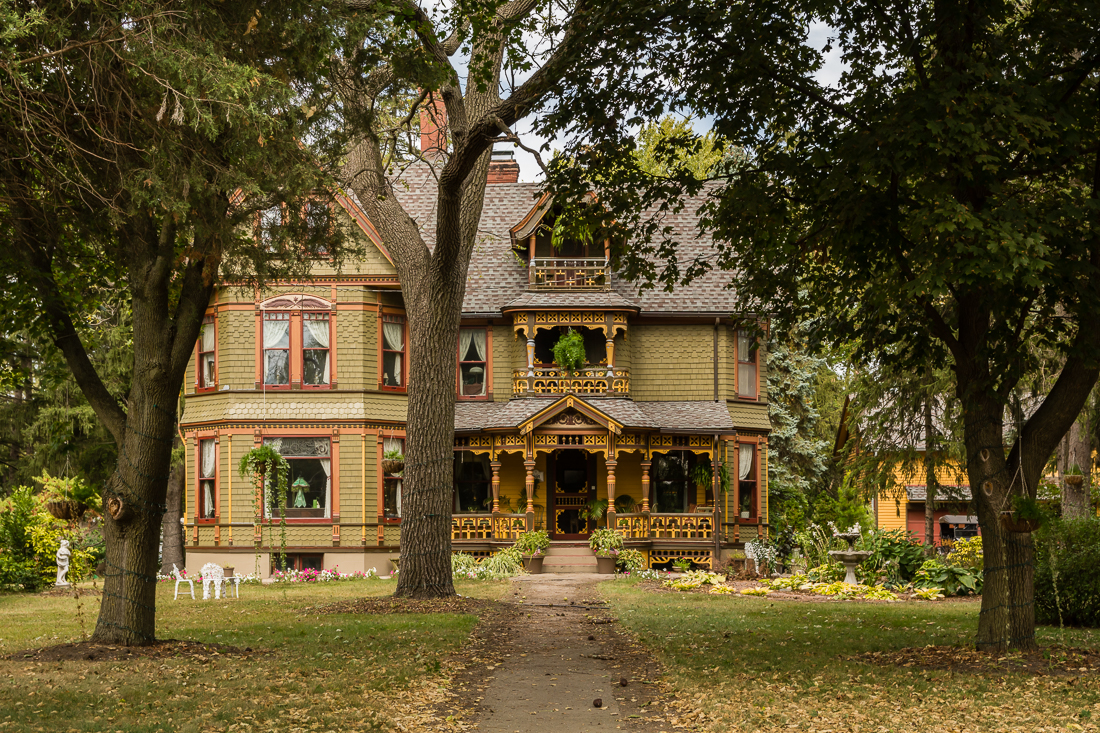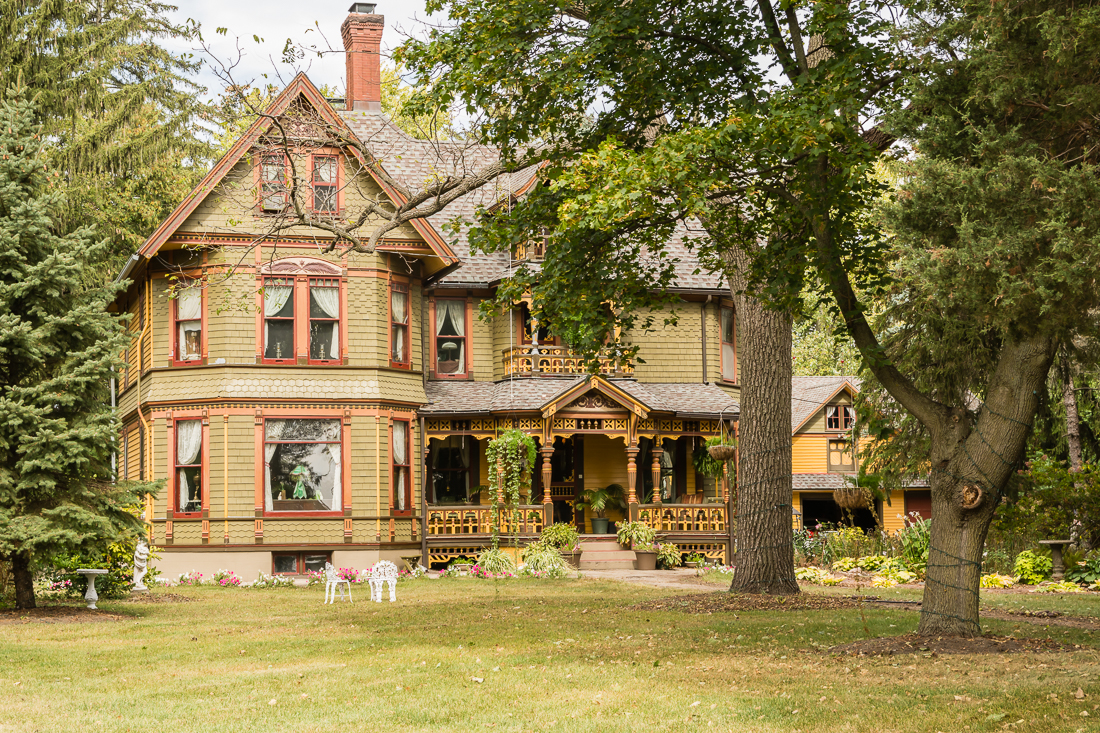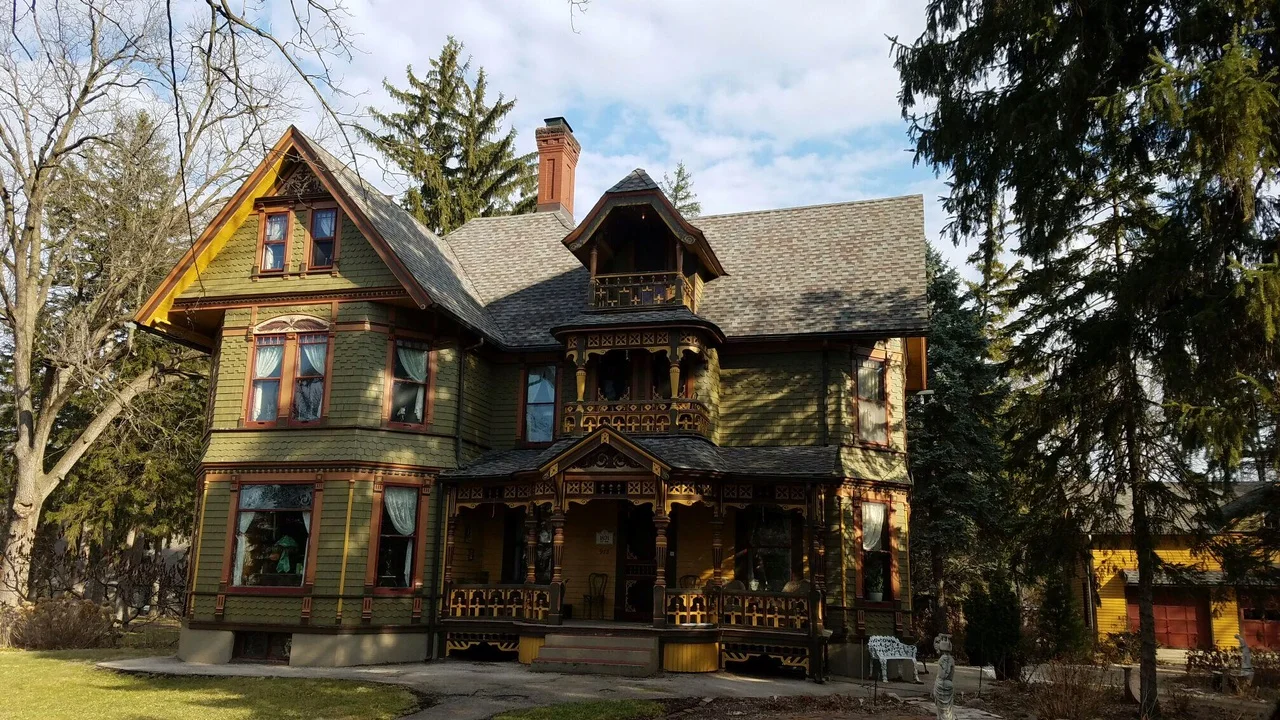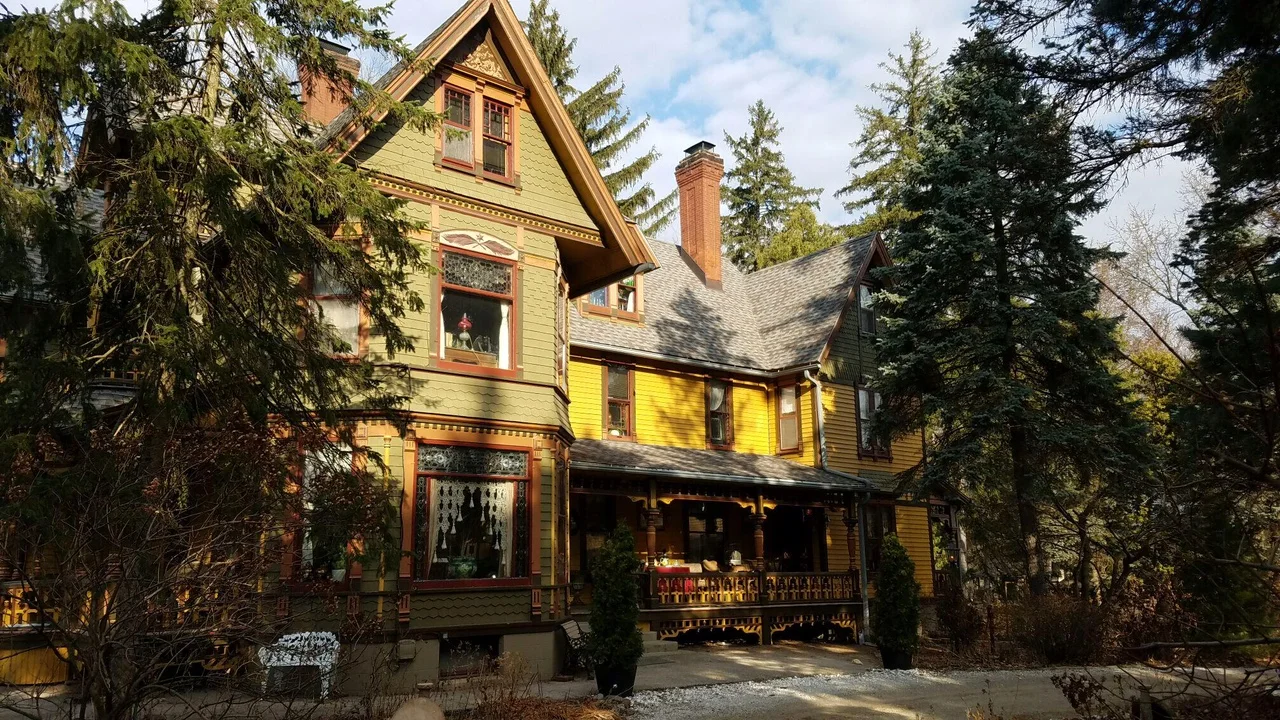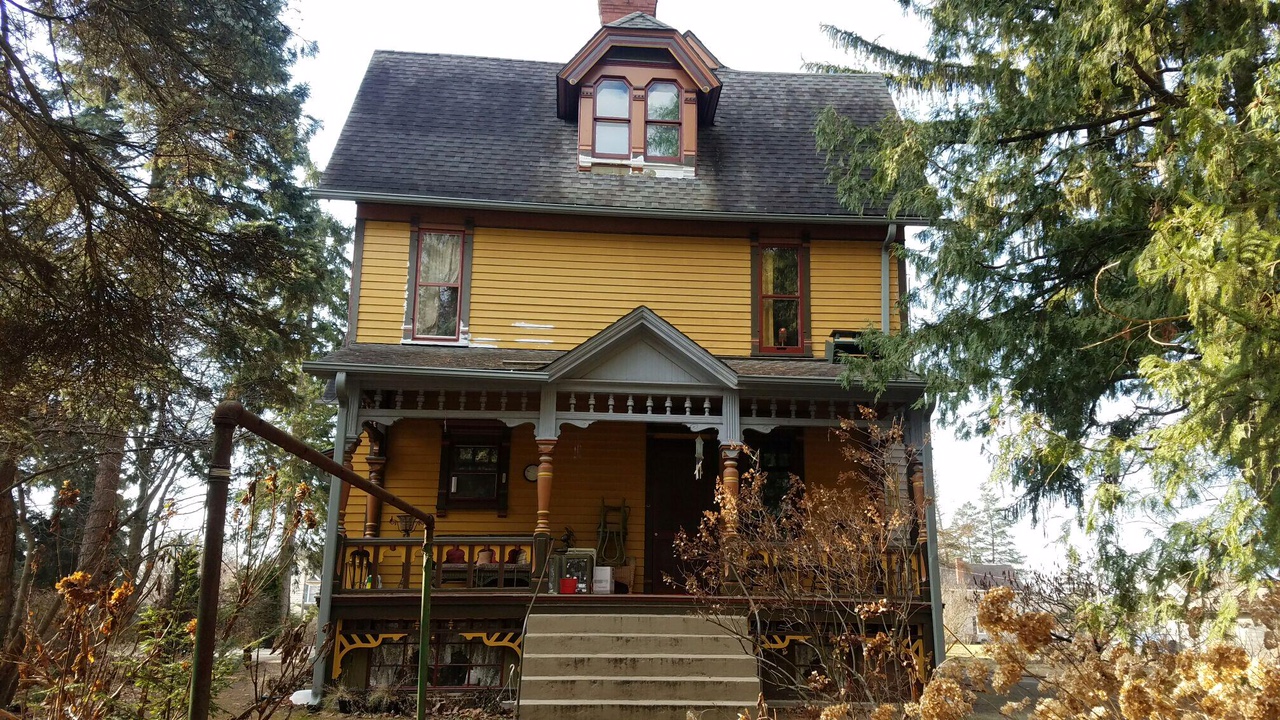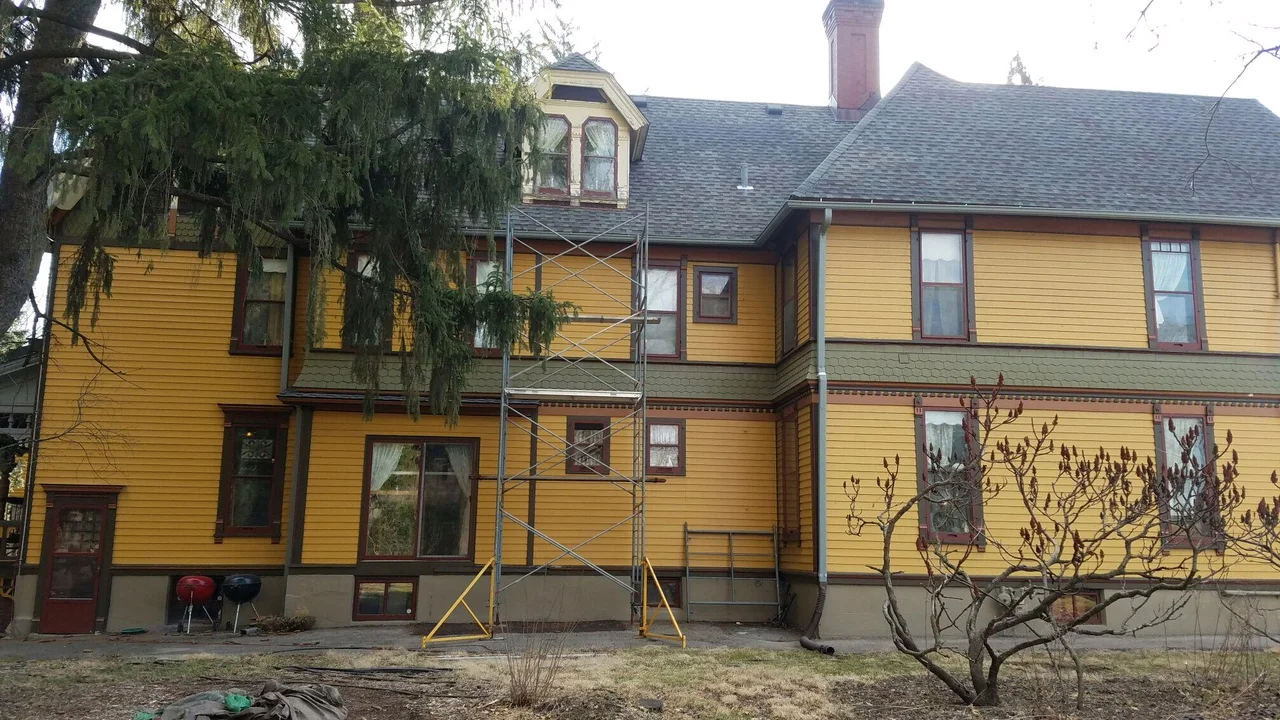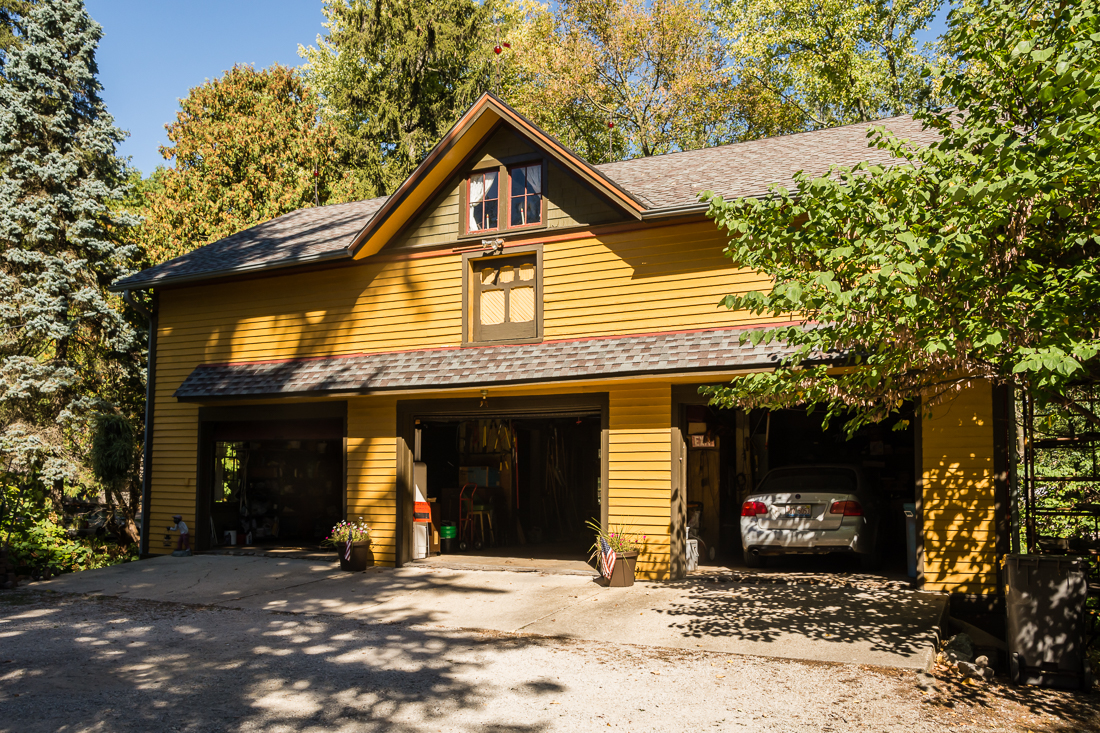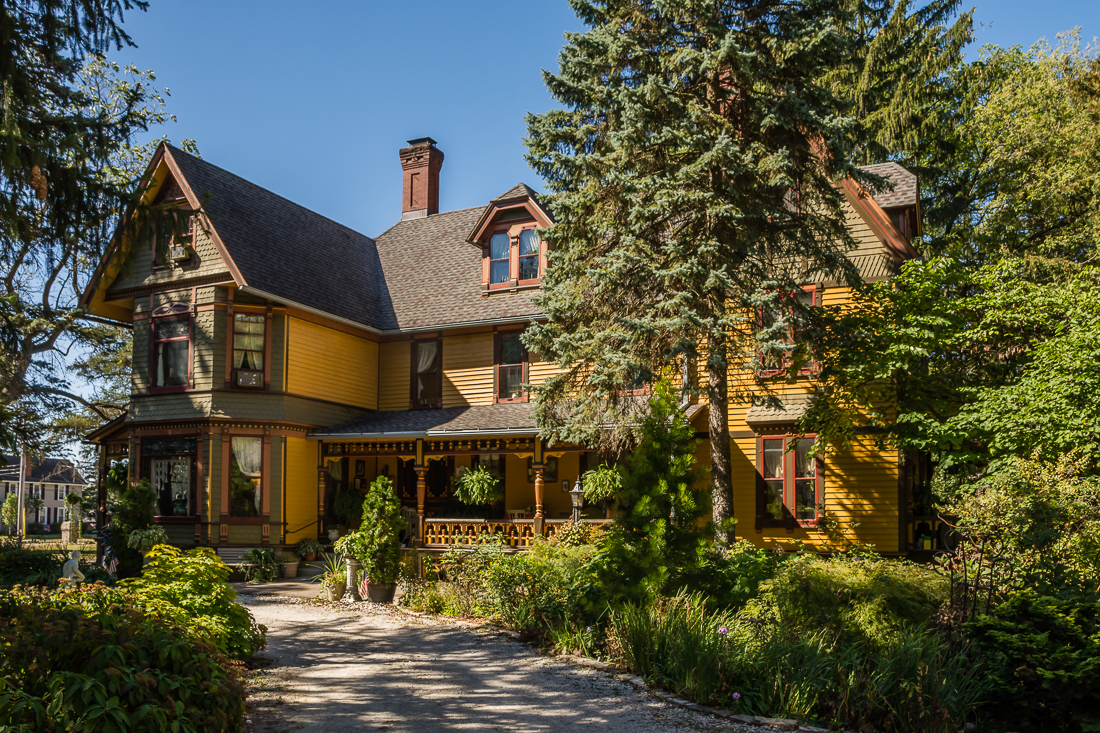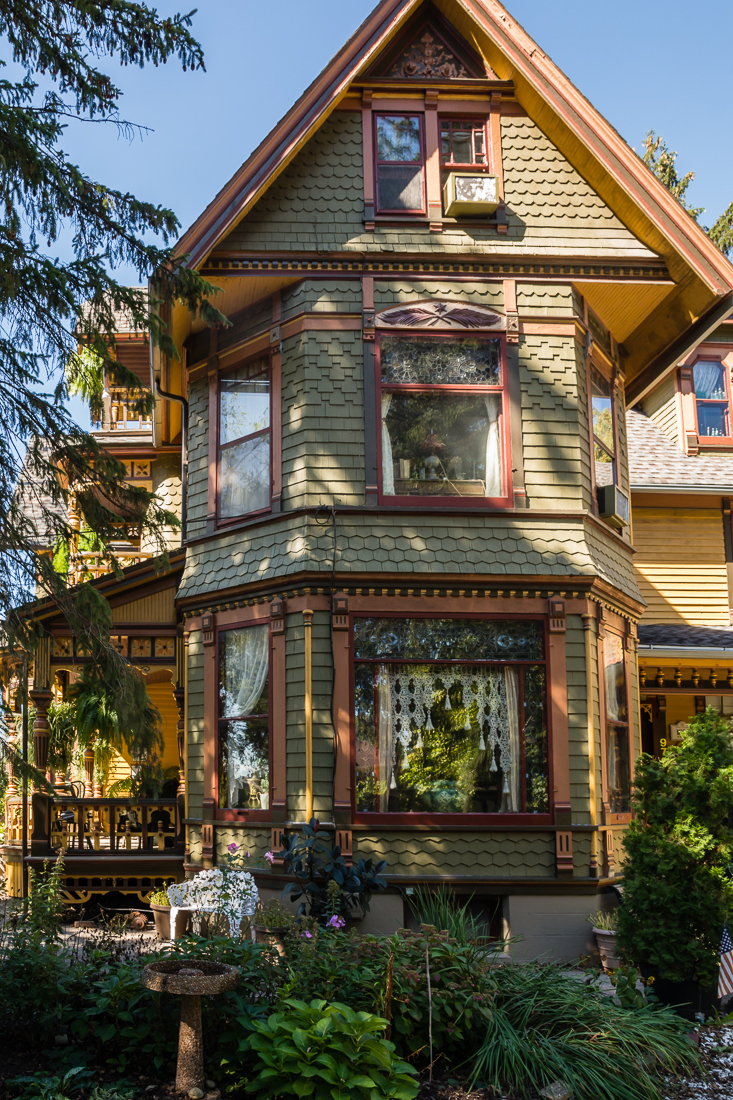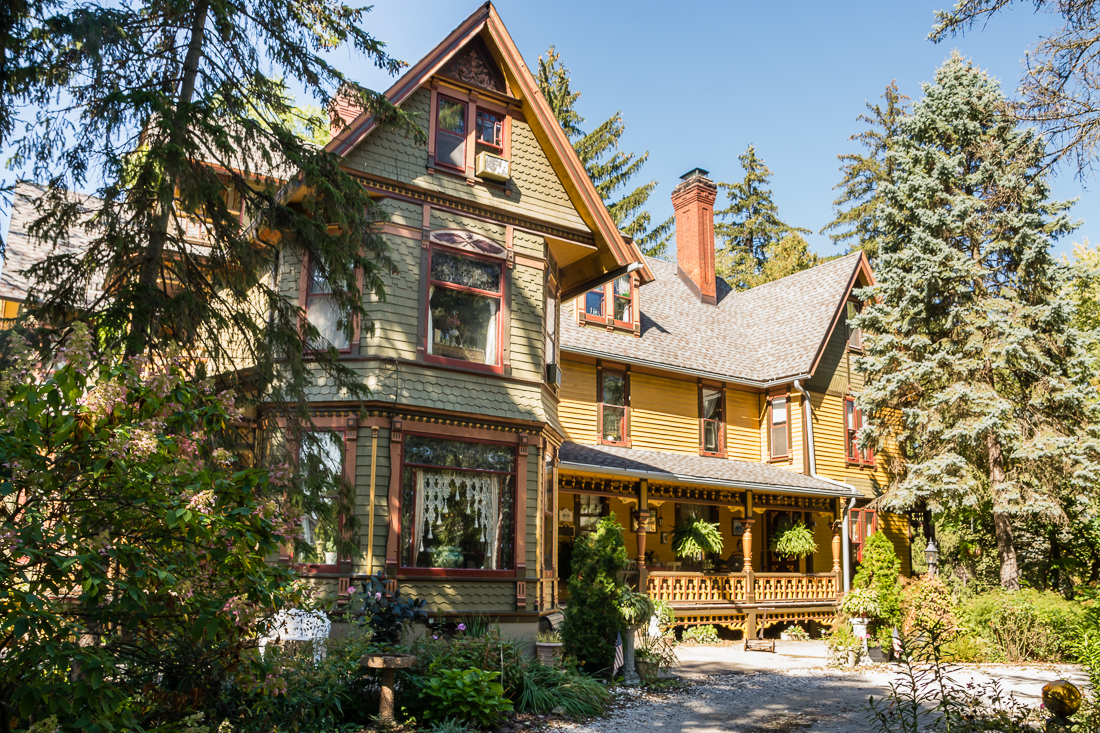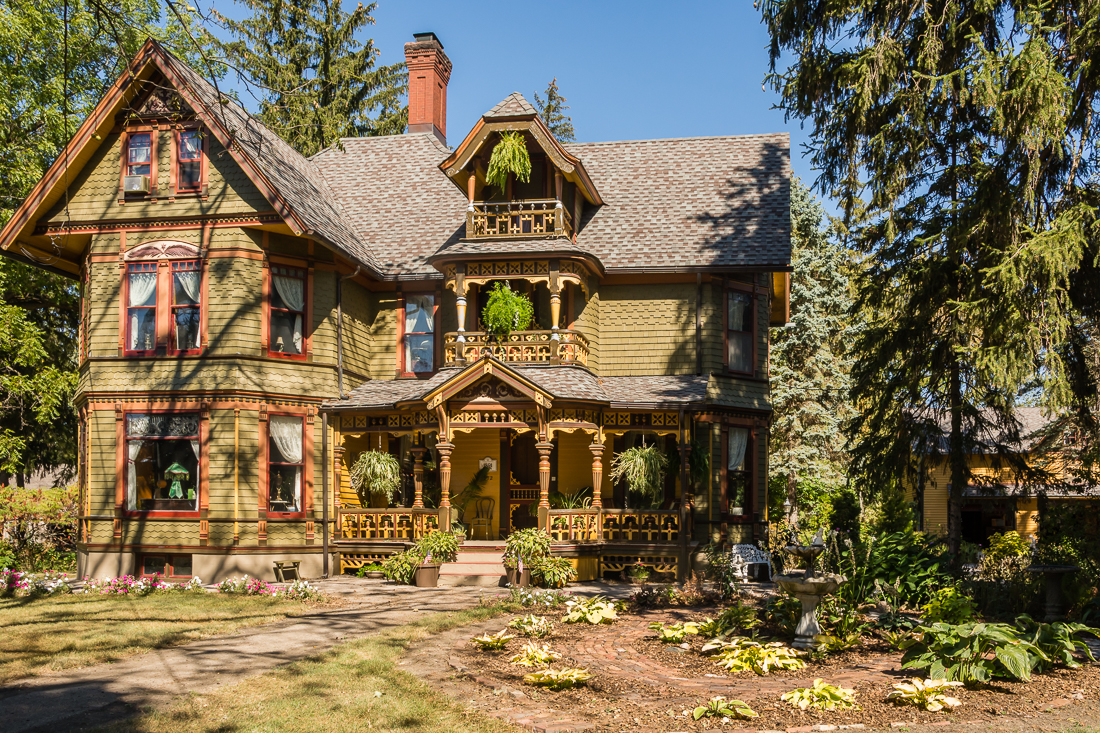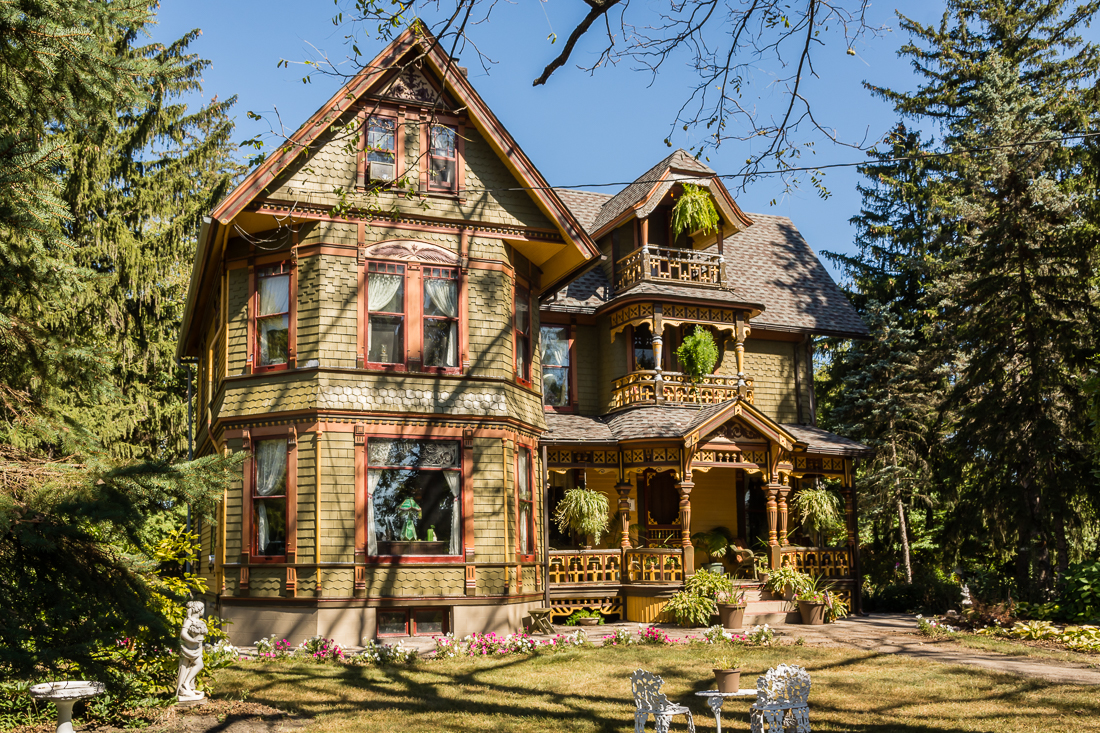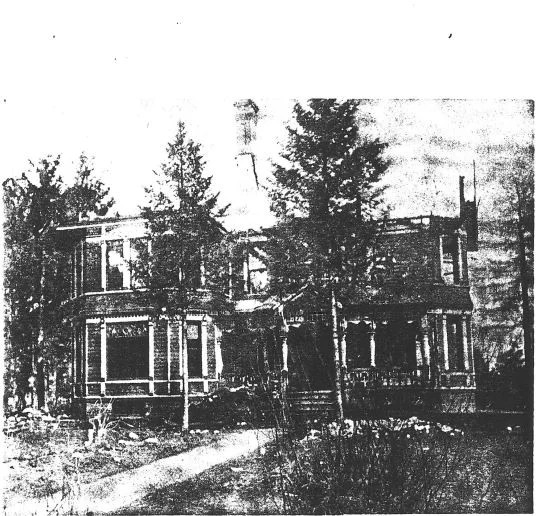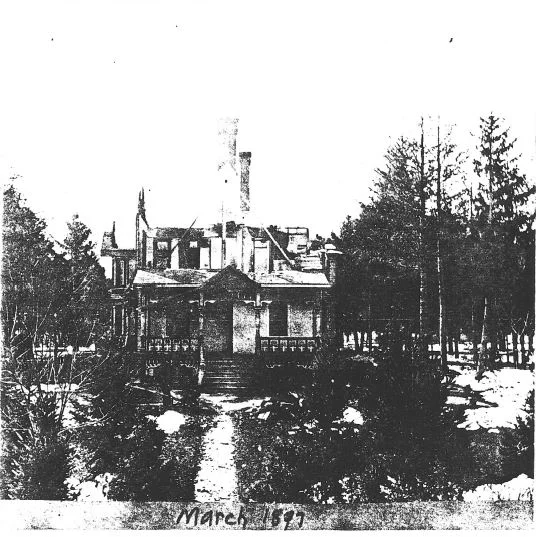972 W. HIGHLAND AVENUE
HISTORIC SIGNIFICANCE
In 1852, Washington Wing and his then third wife, Adaline Wing purchased 200 acres of land for $2,420. In the latter half of 1850, the Wings went about making improvements to the land by building a modest farmhouse. In 1859, the house was passed down to their son, William H. Wing. Then unmarried, he acquired 20 acres of land and the associated outbuildings for $10,400. Shortly after William received this land, he married Abegail (Abby) Saunders in 1861 and began designing and building enlargements, including a carriage barn in 1870. Final major alterations were made in 1891, making stylistic changes to the Queen Anne and Eastlake elements still seen today. At the time, there was also a 1 1/2-story viewing tower atop the third floor, but is no longer there. In 1897, a fire broke out on the third floor, which destroyed much of the third floor the viewing tower and, regrettably, the life of Abby Wing. William rebuilt the third floor but not the viewing tower.
William and Abby, before her passing, were both prominent members of the community. William was a lawyer, admitted to the Illinois Bar in 1867. From 1871 to 1872, William was Elgin's city attorney; from 1880 until 1885 he served as the treasurer of the Illinois Northern Hospital for the insane and for four years he was director of the First National Bank of Elgin. Abby was similarly of notoriety in Elgin's education sector. She taught at Elgin Academy, New Brick School, and what is today known as Illinois Park. When the New Brick School was razed and a new school was built in its place, it was named after Abby.
For those familiar with Elgin, the name Wing sounds very familiar. From Wing Street to Wing Park, the name is present throughout much of Elgin’s West side. In fact, the land Wing donated – made officially Elgin’s by city ordinance in 1903 – was donated for the sole purpose of creating a golf course. This golf course, eponymously named, is now one of the oldest public golf courses in the state of Illinois and is on individually recognized on the National Register of Historic Places.
ARCHITECTURAL SIGNIFICANCE
972 W. Highland Avenue is a Smith Hoag designed home of the Queen Anne, Eastlake Stick architecture, one of the few to exist in Elgin. Significant features include various types of wood shingle cladding, a front-porch with elaborate Eastlake ornamented supports, rails, and frieze. The parade porch on the 2nd floor with Eastlake details also adds the character defining features.
Bay windows on the front façade and a prominent front-facing gable are typical of the Queen Anne style. An irregular shaped floor plan at 2.5 stories tall and double hung wood windows can be seen as showcasing the Queen Anne style as well.
TIMELINE OF PREVIOUS OWNERS
Sources: 1993 Heritage Plaque Application; Audio: TextAloud
